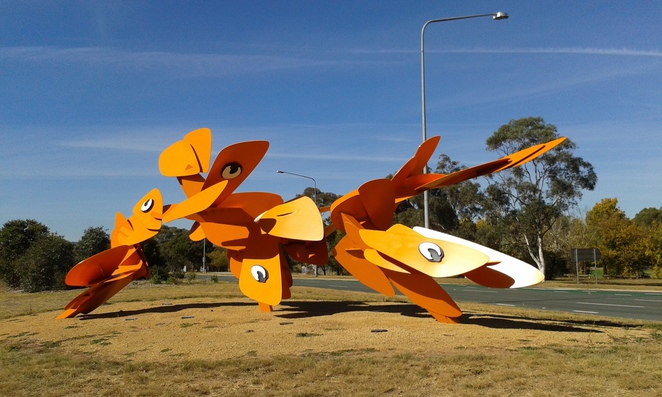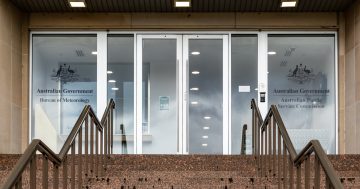
Moth Ascending The Capital by Alexander Knox (2012) on Drakeford Drive, Tuggeranong.
The ACT Auditor-General has called for the development of a strategic plan to oversee the development of the Territory’s contentious $17.8 million public art collection.
In her report, Selected ACT Government agencies’ management of public art, Dr Maxine Cooper said that while the 117-piece collection was being administered effectively, the ACT needed a public art strategy that “builds on the strength of the existing public art, guides future direction and seizes opportunities for enhancing the ACT public art collection”.
“Ideally, it should be developed cooperatively by the ACT Government, the Australian Government and private sector entities who manage the various, and numerous, public artworks in the ACT,” she said.
Dr Cooper said the ACT should look to other jurisdictions and the private sector to identify a management model to underpin the strategy.
“It would be prudent to explore models used in other jurisdictions that embrace private sector entities’ participation and do not rely solely on public (taxpayer) funding, as has been the case to date for most ACT Government public art,” she said.
The report recommends artsACT lead the development of an ACT Public Art Strategic Plan.
“The plan should incorporate: a desired management model; mechanisms for the involved agencies to work cooperatively; and awareness raising of the contribution of ACT public art to the public realm,” it said.
The report says artsACT should develop and implement an overarching risk management plan, as well as a performance measure for public art, and update the Public Art Database so that information is available for all ACT Government public artworks.
It says ACT Government agencies have effective processes for the acquisition of public art but these could be improved including providing better guidance in the ACT Government Public Art Guidelines (2015).
It says the Guidelines need to be revised to more clearly reflect the three acquisition models used by artsACT (commission, purchase and donation), complexities and key decision points within the acquisition process in flowcharts, management of public art on loan to the ACT Government, and cultural and local indigenous community sensitivities in acquiring and decommissioning artwork.
Dr Cooper said that while ACT Government public artworks were in good condition, she recommended a maintenance and repairs plan be developed for each public artwork at the time of acquisition.
The report says artsACT and agencies should work together to devise ways to better protect artworks from damage by contractors.
The commissioning of some public artworks in the ACT has come under attack from the Opposition, which has questioned the cost to the taxpayer.
What do you think of the ACT’s public art collection? Does it enhance the Territory or is it a waste of money? Let us know your thoughts by commenting below.





















